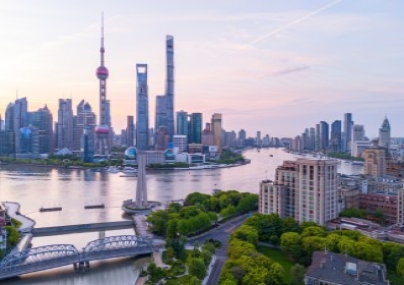There is the unit trust, family trust, foundation, segregated portfolio company, exempted limited partnership, and the simple corporate structure - offerings from major offshore financial centres that are slowly integrating with local business structures across Asia.
“The BVI and Cayman Islands companies are probably the universal favourites, used for everything from holding residential property to an IPO,” says Christine Chang, partner at Maples and Calder in Hong Kong, “for many, cost, quick turnaround and low maintenance are the most important factors.”
According to Chang, often the initial reason for choosing a particular structure relates to the tax and regulatory requirements of the client's home jurisdiction.
Protected cell company
One such offshore structure gaining popularity in Asia is the protected cell company, also known as the segregated portfolio company. “More recently, there has been increased demand for more specialist structures, such as the segregated portfolio company which gives statutory recognition to ring-fenced liability,” says Chang.
A segregated portfolio company allows the company to create and operate one or more segregated portfolios, with each of them legally segregated in terms of its assets and liabilities. “Each segregated portfolio can have different investors and different investments,” says Denise Wong, partner at Walkers' Hong Kong office.
Explaining it further, John Melia, corporate and commercial partner at Appleby in Hong Kong, says : “It is like a bundle of companies run under one banner where each cell or portfolio has a limited liability.” According to him, such companies are used for setting up umbrella firms where each of their cells is a sub-fund having a slightly different investment strategy.
Citing a recent example, Wong says that one of their clients was going to invest in two plots of land in mainland China and while the client wanted to invest in one of the plots, it was not necessarily interested in the other. “That is a classic example of where a segregated portfolio company can be very useful, and Walkers set up a Cayman-based segregated portfolio company for him. It was arranged so that each plot of land was held in a different segregated portfolio and investors in one would not be exposed to the other,” she says.
These companies also have a special use in the captive insurance industry. “Rather than setting up their own company, insurers can ‘rent’ a cell in an existing protected cell company run by an insurance manager,” says Melia. “Whenever a new client comes with a new captive insurance proposition, a new cell is established.”
In addition to convenience, cost efficiency is another major reason for the popularity of these segregated cell companies. “For an existing fund or investment company that wishes to add a new investment concept or strategy, we simply create another cell, which is done very quickly and with minimal set-up cost,” says Walkers' Hong Kong office Managing Partner Andy Randall.
However, these structures also have some potential downsides. "Disputes arising through the working of these companies could take the investors into uncharted territory as they have not been widely tested in the courts," says Randall. "For this reason," he adds, "some conservative investors do not always like to use them."
Furthermore, Randall says that there is another potential risk associated with segregated portfolio companies which people need to keep in mind, especially when passing resolutions and binding the entity. “If I am giving an indemnity, I have to clarify exactly which particular cell is granting that indemnity,” he says, “I have seen an unfortunate situation where a director had passed a board resolution in which an indemnity was granted in respect of all the assets of a segregated portfolio company when he had actually only intended to grant the indemnity with respect to the assets of Cell A or Cell B.”
These special corporate structures exist both in Cayman and BVI but according to Wong, the Cayman one is more popular. Onshore jurisdictions like England and Hong Kong do not have such structures, says Melia.
Unit trust
A unit trust is another popular offshore vehicle which can be used as an alternative to corporate structures. It is commonly used in Japan as an investment funds vehicle, and Japanese investors continue to find them attractive for tax and familiarity reasons. “Cayman unit trusts have traditionally been deemed to be 'pass through' for tax treatment purposes in Japan and, therefore, Japanese investors use these structures to pay tax in a more efficient way,” says Wong.
Indeed, the preference of the investors is always the main driver in deciding the underlying structure for an offshore vehicle. “We worked on a recent deal where originally, it was anticipated to be structured using a Cayman exempted limited partnership. But it was later decided that a unit trust was a more appropriate vehicle when strong interest in the investment came through from Japan,” says Randall.
In China, there has been some increase in interest in trusts, but in general, companies are still more popular, says Melia.
Partnerships
Partnerships, especially the Cayman Island exempted limited partnerships, are also used to set up investment funds because they offer similar facilities as companies or unit trusts. “Investment fund managers often form an exempted limited partnership to act as a private equity fund, an alternative investment vehicle, a parallel fund, a co-investment vehicle, a hedge fund or a feeder fund for international investors,” says Chang.
Traditionally, partnerships were not widely used in Asia. According to Randall, “the partnership is something of a new beast, which has gathered increasing regional traction because of the substantial inflow of private equity money in the late 1990s and early 2000.” He notes that the limited partnerships set up by private equity funds are quite complex and heavily negotiated.
The flexibility offered by the partnership structure is the key to its rising popularity. “The partners don’t necessarily pay their contribution at the outset, but do so when the private equity fund makes a capital call,” says Wong. “The fact that a contractual agreement is in place means that the partnership structure is extremely flexible.”
Other than funds or private equity business, there is not a great deal of use of offshore partnerships by Asian clients, says Melia.
Trusts
The use of offshore vehicles goes beyond business operations. Trust structures offered by developed offshore centres serve a crucial requirement of managing family wealth and succession planning. According to Li-Lee Tan, counsel in the private client and trusts team at Appleby in Hong Kong, “offshore trusts are gaining in popularity with our clients in Asia, and they are especially used by the wealthy families for investment holdings and succession planning.”
As many of the businesses in Asia are family owned, the use of trusts provides extra benefits. Not only is the wealth distributed in a more orderly way after the death of a patriarch, but it also ensures the continuing succession of the business.
Furthermore, offshore trusts are favoured in Asia because, according to Tan, the Chinese trust laws and norms are still developing while those in Jersey, Guernsey, Isle of Man, Bermuda and Cayman are very well established. In addition to trusts, Jersey, Guernsey and Isle of Man also have foundations. These trusts and foundations are usually set up when the founder is still alive.
Among Chinese clients, there is a trend of investing abroad and for doing so, family trust is a very useful solution, says Tan. “In addition to Hong Kong and China, we are seeing clients in Taiwan using offshore trusts,” she says.
Offshore family trusts are also popular in India, but for different reasons. According to Shefali Goradia, a chartered accountant and a tax consultant at BMR Advisors in Mumbai, most Indian business families who jointly own property have at least some members residing outside India. Indian tax laws and capital market restrictions make it important to have a trust structure that is based outside India, and mostly those in offshore centres are chosen.
“A typical offshore structure used in India is a combination of a trust and a company,” says Goradia, “there is a trust at the top which owns a company engaged in carrying out the actual operations.”
According to Goradia, the main concern of an Indian patriarch is to ensure that the wealth does not get passed on unduly into the hands of some of the younger benefices while devising a way to distribute the income among them for their education and housing needs.
The trust structures created for Indian families also have protectors, who are usually family friends who in case of a dispute, advise the trustees in distributing wealth.
According to Melia, offshore trusts also attract those who want to protect their assets from expropriation by governments or even spouses. “As the trusts are held for the benefit of the named beneficiaries, a settlor can ensure that assets end up with their children rather than in the hands of their fourth wife or some other unexpected person” he says.
The family which decides to set up a trust would inevitably be having substantial wealth at its disposal. However, according to Chang, not every wealthy family does that. “Mostly, the sophisticated international families with longer-established wealth use trust structures,” she says.
Trusts could also be used by corporations. “Very often, before pre-IPO restructuring, the founders set up trusts to structure their shareholding,” says Tan. Managing employees’ share option plans is another task done efficiently by offshore trusts.
However, according to Chang, for clients in the emerging Asian markets, trusts are less familiar. “They prefer companies to which they can relate,” she says, “we are also seeing interest in the use of Irish companies in order to benefit from the extensive double-tax treaty network that Ireland enjoys.”
Offshore trust structures offer a variety of useful options, and are not to be copied from once case to another. “Each client would have to look at its circumstances, seek professional advice, and get the lawyers involved in setting up the trusts,” says Melia.
Philanthropy
In addition to normal business structures and family wealth trusts, offshore vehicles also cater to Asian businessmen involved in philanthropy. “There used to be a perception that Asian family businesses would keep their wealth only for themselves, but with the growing wealth in Asia, there is an increasing trend towards giving back to the society,” says Tan.
Trusts and foundations ensure that the wealth is efficiently put to social use and the founders are aware of the same. “There has been a tremendous maturity and familiarisation with the use of trusts among Asian clients,” says Tan, “founders of these structures are also bringing professionals for better structuring, advice and administration of these trusts.”
Corporate structures
However, a traditional offshore corporate structure remains the most popular vehicle in Asia. “If you are looking for a cheap and cheerful capital raising vehicle, you end up with a more basic corporate structure,” says Randall.
"Corporate structures have been widely used for hedge funds and investment funds," says Wong. Recalling an interaction with one of her clients, she says that an individual had quit his job and pooled some money from family and friends in order to start a new hedge fund. Advice was then sought on the most suitable structure for the new venture. According to Wong, in such cases, clients tend to want to keep the cost low and so a standalone corporate structure is the best solution. “Where nothing fancy is required, then just one company will probably work better for this type of client,” she says.
"When there are hedge funds, general investment funds or mutual funds, then the corporate structure always makes more sense," says Wong. However, at the same time, she says that “as the structure gets more complicated, it also becomes more costly.”
According to Wong, occasionally there are clients who say that they want to set up a private equity fund but with a corporate structure and not under a limited partnership. “They want to do that because often, they are less familiar with the partnership structure whereas they do understand the corporate structure,” she says.
Follow us on Twitter: @ALB_Magazine.
.jpg) limited partnership, and the simple corporate structure - offerings from major offshore financial centres that are slowly integrating with local business structures across Asia.
limited partnership, and the simple corporate structure - offerings from major offshore financial centres that are slowly integrating with local business structures across Asia.

